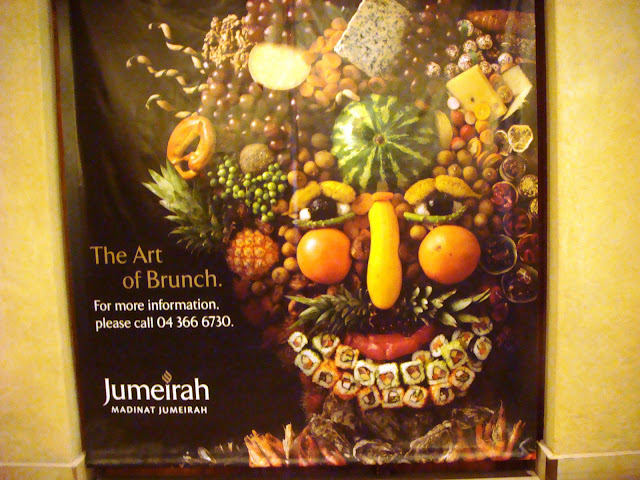I have been wanting to go here since first learning about it...
And we finally scheduled a visit when Joe and Scho were in town!
(Note the short doorways -- perfect for Scho, not so much for John!)
The first part was a walking tour through a traditional village (Bastakiya), which showcased how the Emiratis lived before oil was discovered in 1960's. Old Dubai was famous for its wind towers that lined the Dubai Creek on both sides, and today its narrow lanes, coupled with the distinctive Arabian architecture, made for an interesting tour!
Our guide was delightful, as was roaming through the maize of homes and courtyards....
(It was awesome walking through Old Dubai with glimpses
of the newer, modern Dubai up ahead!)
The Bastakiya district has been earmarked for tourist development, with construction of a museum, cultural center, and art galleries that showcase local artists.
In the past, the city was famous for a mass of wind towers that lined both sides of the Dubai Creek. These wind towers were not just decorative. They were the only means of cooling houses in the days before electricity! Today, although most are non-working, they stand as symbols of the past. And they are beautiful symbols!
The doorways were interesting. The "normal" doors on the right were used to carry furniture etc. through. The smaller, arched doors were the ones that people would actually use. There are a couple of different reasons for the smaller, shorter doorways. First, they allowed the cooler air to gust inside faster and lower the temperature of the room, and second, men would walk through them with their heads down. Therefore, if a woman was inside that was uncovered, it gave her time to wrap a veil around her head and shield her face.
(Yikes! I'm not sure I would fit!)
After the walking tour, we were led inside the cultural centre where the table was set for our traditional Emirati luncheon.
The dishes were brought in and the meal was served.....and it was absolutely delicious!
Throughout the luncheon we were asked to raise any questions that we had about Emiratis and the Emirati way of life. This is the man (I forget his name!) who answered our questions -- he was hysterical and did a great job!
Of course, many of the questions were about the Emirati dress. We learned that the men's robes were called kandoras in the UAE and dishdash in Saudi Arabia. Local men wear a small skull cap (gutra) or an Arab head dress (keffiyeh), which is held in place by a twisted black coil (agal). The black twisted coil is actually used on the front legs of camels to restrain them, and then it is conveniently stored on the Arab man's head! Convenient, eh?
Emirati women wear a floor length dress which is often decorated in embroidery (jillabeeya) and covered by a black cloak (abaya). Some women cover their face with a black cloth (nikab) that only reveals the eyes.
And some, mostly older women, wear a canvas mask called a burga which covers the eyebrows, nose and mouth. Not only is it used to cover the face, but it is also protection against the sun's rays.
Almost all women cover their hair with a shaila or hejjab as, according to Islam, hair is private. There are many words for the different parts of traditional Arab garments, so it was interesting for me to see and hear about them. It was a fascinating and fun afternoon and I highly recommend the Centre for Cultural Understanding to all visitors in Dubai!
As we were leaving the Centre, these displays of earlier days in Dubai were thought provoking, to say the least.
(Note the women were wearing the burgas. They wouldn't look up for a picture though!)
Of course, one of my most favorite parts was the camel that rested outside the center!
(Another thing I learned at the Centre was that camels need to walk and run in the desert.
If they are owned and not wild, they need to be exercised daily or they will go mad!)
It was an awesome tour and I learned a lot from it! The biggest takeaway was what the Centre for Cultural Understanding actually stands for....
We may have varied backgrounds. We may come from different cultures. But all in all, Open doors. Open Minds. I like that a lot and couldn't agree more!

















































